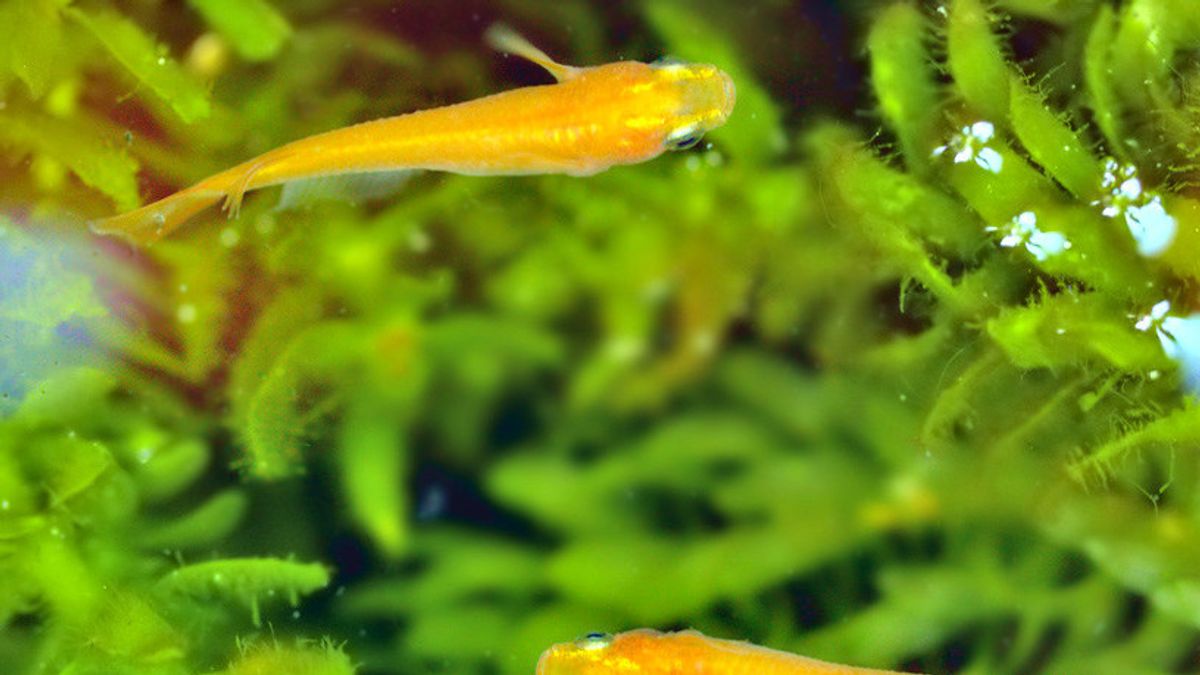JAKARTA - Five people have been arrested and four people handed over to prosecutors, on suspicion of their involvement in Japanese killifish cultivation undergoing genetic engineering to remove red, police said, with fish coming from eggs taken from the Tokyo Institute of Technology laboratory by a student.
The arrests are Japan's first on alleged violations of Cartagena's law, which came into force in 2004 to regulate the use of living organisms that undergo genetic engineering, according to Tokyo police.
Known as "swimming eye", Japanese killifish which have various colors and shapes have recently become increasingly popular with residents of the Rising Sun as aquarium fish.
Police have seized about 1,400 genetically engineered Japanese killifish from related places and confirmed in one case that two fish had been sold for 100,000 yen (USD 726).
Although some have been dumped, police say there appears to be no danger to biodiversity, as reported by Kyodo News March 8.
The nine suspects, including a former 35-year-old student at the university, who were referred to prosecutors, have acknowledged the charges, they said.
Among the five people arrested was Naoji Aoki (60), a company employee suspected of transporting and breeding genetically modified Japanese killifish, for sale between March and June 2022 without obtaining official permission from the government.
Another suspect, Toshikazu Furukawa (68), who allegedly threw some of the fish into irrigation canals in Chiba Prefecture between July and August 2022.
Police launched an investigation after receiving information in 2022 that the genetically modified Japanese killifish had been sold at an exhibition in Tokyo.
It is known, the Cartagena Law requires parties who want to store and sell living organisms that have been engineered, must obtain permission from the government after proving that these organisms will not have a negative impact on biodiversity.
The law is based on the Cartagena Protocol on Biological Security for the Biological Diversity Convention.
On Wednesday, Japan's Ministry of Education, Culture, Sports, Sciences and Technology said the modified killifish were traced from eggs taken from the Tokyo Institute of Technology by a student more than 10 years ago.
The ministry said it had reprimanded the university and urged it to take preventive measures in a letter, adding it had also asked public and private universities and research institutes to ensure they had implemented proper control over the engineering of living organisms.
Meanwhile, the Tokyo Institute of Technology said in its investigative report, the former student worked in a laboratory that deals with genetically modified freshwater fish between April 2009 and March 2012, engaged in breeding and maintenance of the organism.
He allegedly handed over some eggs to the mothers of fellow students at the university, which resulted in the spread of genetic engineered organisms.
Japanese killifish are increasingly attracting the attention of fans because they are easy to maintain. This fish is the third most popular pet after dogs and cats, according to a 2022 survey conducted by the Japanese Animal Food Association.
The English, Chinese, Japanese, Arabic, and French versions are automatically generated by the AI. So there may still be inaccuracies in translating, please always see Indonesian as our main language. (system supported by DigitalSiber.id)













